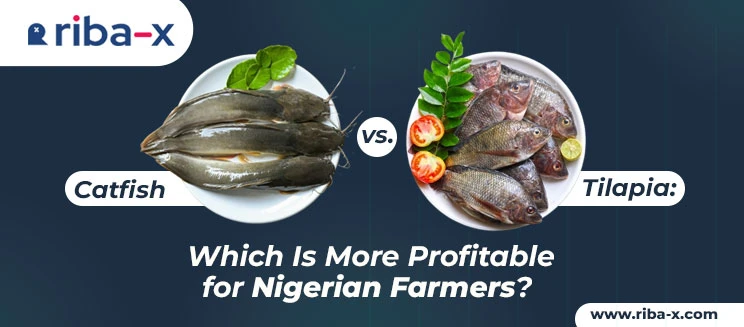 Olugbemi. Adeyinka Ogunleye
1 week ago
Olugbemi. Adeyinka Ogunleye
1 week ago
Overview
Catfish vs. Tilapia: Which Is More Profitable for Nigerian Farmers?
If you’ve ever thought about diving into fish farming in Nigeria, you’ve probably wondered — should I go for catfish farming or tilapia farming? Both are popular choices in aquaculture Nigeria, but the better option depends on your goals, resources, and local market demand. Let’s break it down so you can make the right call for your farm.
Understanding the Basics of Catfish and Tilapia Farming
Before we talk money, it’s important to know what you’re dealing with.
Catfish farming is loved for its high yield and strong resistance to diseases. Catfish grow fast, adapt well to different environments, and are a favorite in Nigerian homes and restaurants.
Tilapia farming, on the other hand, is praised for its mild taste, easy breeding, and adaptability to various water systems. It’s also in demand globally, making it a potential export option for farmers.
In short: Catfish is the local champion; tilapia is the international contender.
Startup Costs and Farming Requirements
When it comes to setting up, catfish farming can be slightly more expensive because catfish consume more protein-rich feed, which costs more. You’ll also need strong pond infrastructure because catfish are more active and can escape easily if ponds are not secure.
Tilapia farming generally requires less feed cost since tilapia can thrive on plant-based diets. However, they need a well-controlled water environment, especially if you’re aiming for high-quality harvests.
If budget is tight and you have access to natural vegetation for feed, tilapia might be the lower-cost option to start.
Profitability: Which Fish Brings More Returns?
Here’s where things get interesting. On the local Nigerian market, catfish profit often beats tilapia because catfish is a staple for dishes like pepper soup and is sold year-round with consistent demand.
Tilapia, while profitable, has a slower turnover in some areas because it’s not as ingrained in traditional Nigerian cuisine. However, if you have access to export markets or high-end restaurants, tilapia can fetch premium prices.
So, catfish farming wins for fast local sales, but tilapia farming could be more profitable for export-focused farmers in aquaculture Nigeria.
Market Demand and Sales Channels
You can sell both catfish and tilapia through open markets, restaurants, and direct farm sales. Catfish benefits from local cultural demand, while tilapia benefits from international buyers and health-conscious customers.
The smart move? Many farmers in fish farming in Nigeria diversify by farming both — this way, they tap into different customer bases and spread risk.
Long-Term Sustainability in aquaculture Nigeria
Balancing both might be the sweet spot for farmers who want stability and growth in fish farming.
Both catfish and tilapia have their strengths. If your priority is steady local demand and quick returns, go for catfish. If you’re aiming for export opportunities and long-term sustainability, tilapia might be your winner. Either way, fish farming in Nigeria offers huge potential for growth — you just need the right strategy.
Want to learn more from fellow farmers, share experiences, and get tips on improving your profits? Join our Online Community for agribusiness at Riba-X Agri-Business Community.
Let’s connect with other experts in fish farming in Nigeria, exchange ideas, and grow together. Your next big farming breakthrough could be just one conversation away in our online community!



